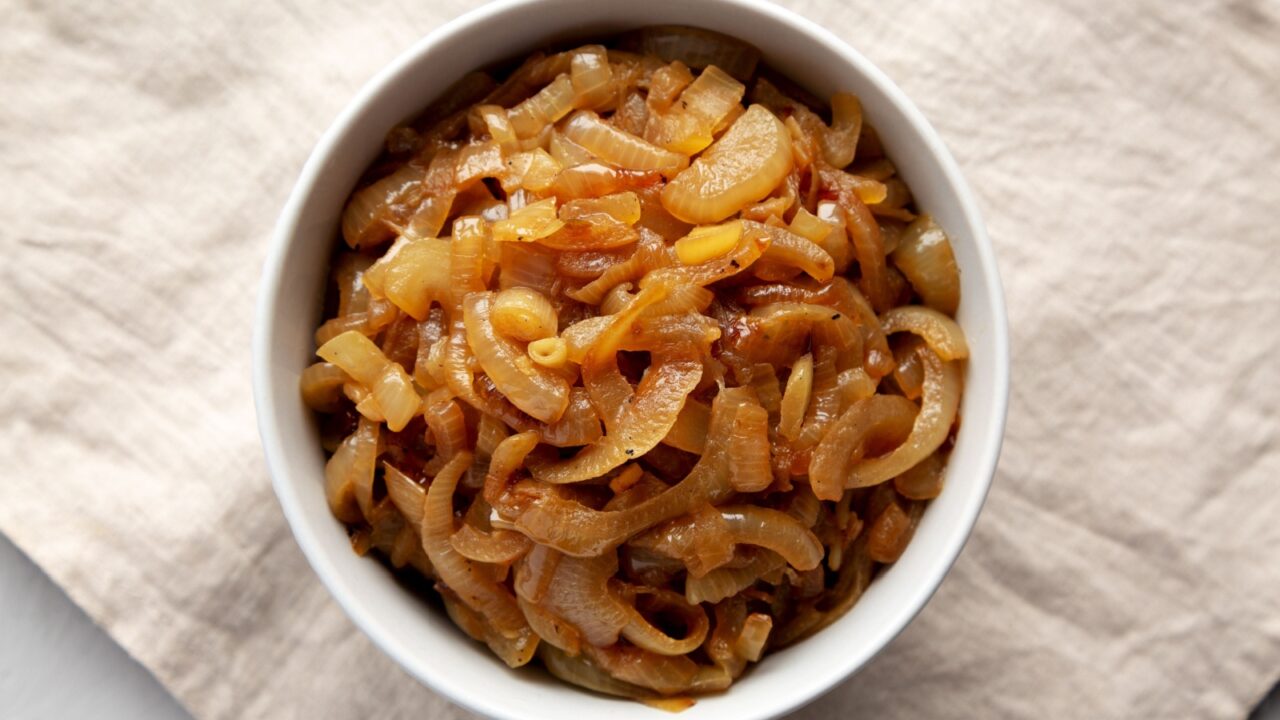Caramelizing onions is a culinary technique that transforms the pungent taste of raw onions into a sweet, rich flavor. This process highlights the natural sugars found within the onions, resulting in a deep, golden appearance that adds complexity to various dishes.
The key to achieving perfect caramelization lies in patience. As onions are cooked slowly over low heat, they undergo a remarkable change, turning soft and golden. This technique not only enhances the taste of soups or toppings but also offers a new dimension of flavor that can elevate any meal.
Preparing the Onions
Selecting the right onions is essential before starting the caramelization process. The best onions should be firm, with smooth skin, and free from any bruising or soft spots.
To achieve the desired sweetness and flavor, consider the following options:
- Yellow onions: These are versatile with a balanced flavor that sweetens nicely during cooking.
- Sweet onions: Varieties such as Vidalia or Walla Walla offer a natural sweetness, perfect for those seeking a richer flavor.
- Red onions: Known for their strong taste, they provide a lovely color and a milder flavor once caramelized.
Methods for Caramelizing Onions
To achieve perfectly caramelized onions, patience and attention are essential. Follow these straightforward steps for the best results.
- Prepare the Onions: Start by peeling the onions and slicing them into thin pieces, ideally between 1/8 inch and 1/4 inch thick. This thickness ensures even cooking.
- Heat the Pan: In a skillet, warm butter or oil over low to medium heat. Maintaining the right temperature is crucial; too high will cause burning, while too low will hinder the development of rich colors and flavors. Look for a shimmering surface without smoke.
- Coat the Onions: Add the sliced onions to the skillet, stirring to cover them evenly with the melted butter or oil. A pinch of salt sprinkled over the onions can enhance moisture extraction, which aids in the cooking process.
- Cook Slowly: The key to caramelization lies in slow cooking. Stir the onions approximately every five minutes, making sure to scrape any browned pieces off the bottom of the pan.
- Observe Color Changes: As the onions cook, they will soften and release moisture, transitioning from translucent to a golden brown. This transformation can take anywhere from 30 to 45 minutes, depending on the heat and quantity.
- Recognize Doneness: Caramelized onions are ideally a deep golden brown, soft throughout, and emit a rich, sweet aroma. Although some areas may still appear translucent, most of the onions should exhibit that desired golden color.
- Deglazing the Pan: Optionally, after achieving the right color, deglaze the pan with a small amount of liquid, such as water, broth, or wine. This will lift the flavorful bits stuck to the skillet. Using a spatula, scrape up these browned morsels and mix them back into the onions for added depth of flavor.
Common Mistakes to Avoid
Avoiding a Crowded Pan
Using a pan that is too small can cause ingredients to steam instead of brown. It is essential that the onions make contact with the hot surface of the pan. To achieve optimal results, arrange the onions in a single layer with space between them. If necessary, cooking in smaller batches can be effective.
Skipping the Right Timing
While it may be tempting to increase the heat to speed up the cooking, this often leads to burning. It is important to maintain a steady, low to medium heat. Caramelizing onions usually requires 30 to 45 minutes, with only occasional stirring to prevent sticking. This approach allows the onions to develop their rich, sweet color without compromising their texture.
Storing and Reheating
After cooling, the caramelized onions should be placed in an airtight container. Options include Mason jars, glass lids, or resealable plastic bags. It is essential to remove as much air as possible before sealing.
These onions can be refrigerated for up to five days or frozen for a maximum of three months. For reheating, a microwave with a bit of water is effective. Alternatively, warming them on the stove may take longer but preserves their rich flavor better.
Serving Ideas
Caramelized onions bring a sweet and savory flavor that enhances a variety of dishes. They are adaptable and can be used in both fresh meals and leftovers. Here are some excellent ways to incorporate them:
- Soups and Stews: Caramelized onions elevate the taste of soups and stews. They add complexity to everything from traditional French onion soup to hearty vegetable options.
- Pasta Dishes: Toss caramelized onions with cooked pasta, cheese, and a dash of cream for a quick meal. They also enhance marinara sauces with their natural sweetness. Adding them to a simple cacio e pepe recipe transforms the dish into something special.
- Burgers and Sandwiches: Layer caramelized onions on burgers or sandwiches for added flavor. They complement robust cheeses such as blue cheese or goat cheese beautifully.
- Stuffings and Dressings: Incorporate them into stuffing or dressing recipes for a flavorful twist during holiday meals.
- Dips and Spreads: Blend them into creamy dips for vegetables or crackers. They also serve as a great addition to sandwich spreads and can enhance side dishes—think brown butter mashed cauliflower topped with caramelized onions.
- As a Condiment: Use caramelized onions as a topping for ribeye steaks, roast chicken, or even hot dogs. A generous spoonful adds depth and richness.
With these ideas, the versatility of caramelized onions shines through. Whether enhancing traditional recipes or experimenting with new flavors, they can transform everyday cooking into something extraordinary.




